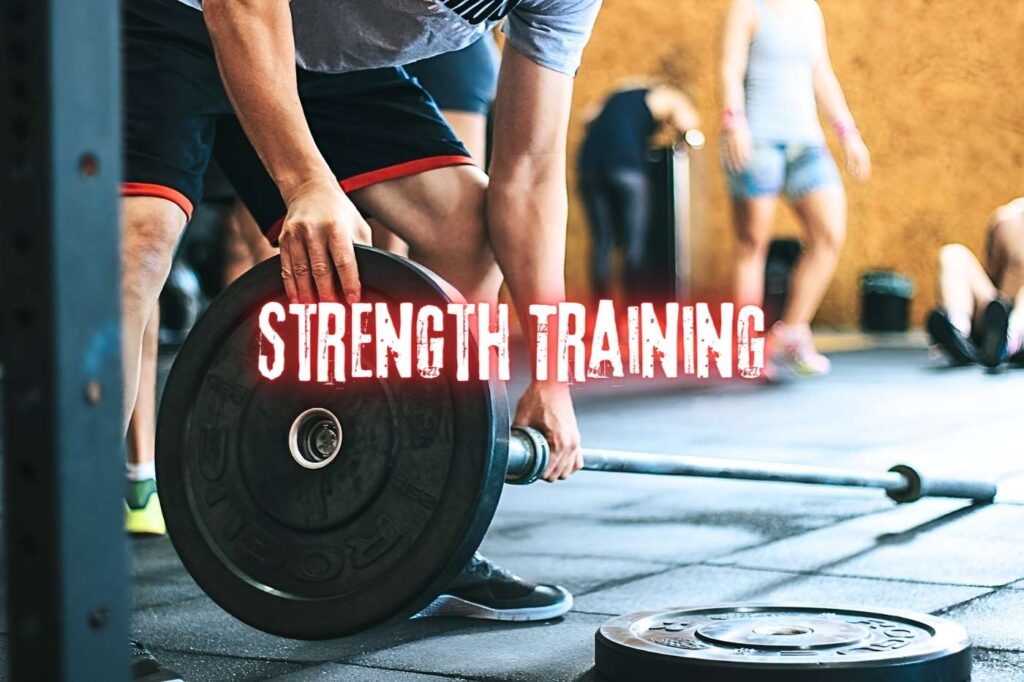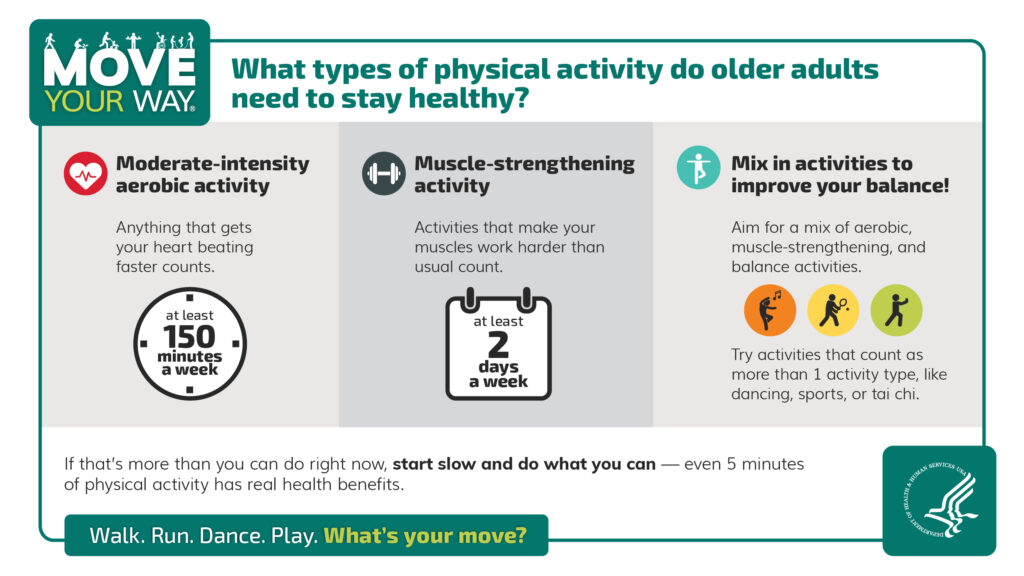Strength training helps reduce bone loss by stimulating bone formation. It increases bone density and strength.
Strength training, also known as resistance training, is a crucial component of maintaining bone health. This form of exercise involves using weights or resistance bands to build muscle strength. As muscles contract, they pull on bones, stimulating bone growth and increasing density.
Stronger bones are less prone to fractures and osteoporosis. Incorporating strength training into your fitness routine can significantly enhance bone health. It is important for people of all ages, especially older adults, to engage in regular strength training exercises. These activities not only improve bone health but also boost overall physical fitness and well-being. Regular exercise leads to a healthier, more active lifestyle.

Credit: melioguide.com
The Importance Of Bone Health
Bones protect vital organs. They support our body. Bones store minerals like calcium. Blood cells are made in bones. Bones help us move.
Bone loss leads to weak bones. Weak bones break easily. Osteoporosis is a risk. Bone loss can cause pain. It can limit movement. Seniors are at higher risk. Women face more bone loss. Lack of exercise speeds bone loss. Poor diet also increases bone loss.
Link Between Strength Training And Bone Density
Studies show that strength training helps in maintaining bone density. This type of exercise puts stress on your bones. Your bones respond by becoming stronger. Many researchers have proven that lifting weights can stop bone loss. Some studies even show it can help build new bone.
Strength training causes small tears in muscle fibers. Your body repairs these tears, making muscles stronger. This process also affects bones. Bones get tiny cracks from the stress of lifting weights. The body fixes these cracks, making bones denser and tougher.
Optimal Types Of Strength Training For Bone Health
Weight-bearing exercises are great for bones. These exercises make you work against gravity. Activities like walking, hiking, and dancing are good choices. Your bones get stronger with regular practice. Even simple activities like climbing stairs help. Try to do these exercises every day. They can reduce bone loss and make your bones healthier.
Resistance training uses weights to build strength. Dumbbells and resistance bands are useful tools. These exercises help your bones get denser. Start with light weights and increase slowly. Squats, lunges, and push-ups are effective. Aim to do these exercises two to three times a week. This type of training is very beneficial for bone health.
Starting A Strength Training Routine
Consulting with a professional can help you start safely. They will assess your current fitness level. Professionals can recommend exercises that suit your needs. This ensures you avoid injuries and progress effectively. A professional can also teach proper techniques for various exercises. Learning the correct form is crucial. It helps in maximizing benefits and minimizing risks.
A balanced workout plan includes various exercises. Focus on different muscle groups. Incorporate exercises for the upper body, lower body, and core. Combining these ensures overall strength improvement. Include both strength training and cardio exercises. Cardio helps in maintaining heart health. Strength training helps in building muscle mass and improving bone density.
Rest days are also important. They allow muscles to recover and grow. Aim for at least one or two rest days per week. This helps in preventing overtraining and injuries. Consistency is key in any workout plan. Stick to your routine for the best results.
Nutrition For Bone Strength
Calcium is crucial for strong bones. Dairy products are rich in calcium. Other sources include leafy greens and almonds. Vitamin D helps your body absorb calcium. Sunlight provides Vitamin D. Fish and egg yolks are also good sources.
Magnesium supports bone health. Find magnesium in nuts, seeds, and whole grains. Vitamin K aids in bone formation. Leafy greens like spinach contain Vitamin K. Phosphorus is another important mineral. It is found in meat, fish, and dairy.
| Nutrient | Food Sources |
|---|---|
| Calcium | Dairy, leafy greens, almonds |
| Vitamin D | Sunlight, fish, egg yolks |
| Magnesium | Nuts, seeds, whole grains |
| Vitamin K | Leafy greens, spinach |
| Phosphorus | Meat, fish, dairy |

Credit: melioguide.com
Lifestyle Choices Impacting Bone Density
Smoking is bad for bone health. It reduces bone density. Bones become weak and brittle. Alcohol also affects bones. Drinking too much alcohol is harmful. It can lead to bone loss. Smoking and alcohol should be avoided. This helps keep bones strong.
Stress can harm bone health. It increases bone loss. It is important to manage stress. Good sleep helps bones stay strong. Eight hours of sleep is ideal. Poor sleep can weaken bones. Stress and sleep are important for healthy bones.
Understanding Age-related Bone Loss
As people age, bone density decreases. Bones become more fragile. This makes bone fractures more likely. Strength training helps maintain bone density. It strengthens the bones. Bones stay stronger for longer periods.
Men and women lose bone density differently. Women lose bone density faster. This is especially true after menopause. Men have denser bones. They lose bone density more slowly. Strength training benefits both men and women. It slows down bone loss.
Monitoring Progress And Adjusting Your Routine
Track your bone density with regular scans. Bone density scans measure the strength of your bones. These scans help you know if your bones are getting stronger. Stronger bones mean less risk of fractures.
Adjust your workout if your bone density is not improving. Change exercises to target different bone areas. Increase the weight you lift to make your bones work harder. Always consult a doctor before making big changes.
Safety Tips For Strength Training
Warm up before lifting weights. This helps your muscles get ready. Use the right form to prevent injuries. Ask a coach for help if you are unsure. Do not lift too heavy weights at once. Increase the weight slowly.
Listen to your body. Stop if you feel pain. Rest between workouts to let your muscles heal. Stay hydrated during and after exercise. Stretch your muscles after each session. This helps keep them flexible.

Credit: melioguide.com
Success Stories: Real-life Transformations
Many people have seen amazing results. John, age 60, started strength training. He noticed his bones became stronger. He could lift heavier weights. Mary, age 55, had less pain in her joints. She felt more energetic every day. Their stories show how beneficial strength training can be.
Strength training can help bones stay strong. It can reduce the risk of fractures. People feel more confident in their daily lives. They can perform tasks more easily. Improved bone density is a big benefit. Strong bones mean a healthier life. This leads to better overall health.
Frequently Asked Questions
Is It True That Strength Training Lessens Bone Loss?
Yes, strength training helps reduce bone loss. It promotes bone density and improves overall skeletal health. Regular exercise strengthens bones.
Can Osteoporosis Be Reversed With Strength Training?
Strength training can help manage osteoporosis. It improves bone density and reduces fracture risk. Always consult a healthcare professional.
Does Strength Training Improve Bones?
Yes, strength training improves bone density. It stimulates bone growth, increases strength, and reduces the risk of fractures.
Does Exercise Reduce Bone Loss?
Yes, exercise reduces bone loss. Weight-bearing and resistance exercises are especially effective. Regular physical activity strengthens bones, enhancing overall bone health.
How Does Strength Training Reduce Bone Loss?
Strength training stimulates bone density, reducing the risk of osteoporosis.
Can Strength Training Prevent Osteoporosis?
Yes, it can help maintain and improve bone density, lowering osteoporosis risk.
What Exercises Are Best For Bone Health?
Weight-bearing exercises like squats, lunges, and deadlifts are excellent for bone health.
How Often Should I Strength Train For Bones?
Aim for at least two to three times per week for optimal bone health.
Is Strength Training Safe For Older Adults?
Yes, with proper guidance, it is safe and beneficial for older adults.
Does Strength Training Help With Bone Fractures?
It can strengthen bones, reducing the likelihood of fractures.
Conclusion
Strength training significantly reduces bone loss, promoting healthier bones. Regular exercise helps maintain bone density, reducing the risk of fractures. Start incorporating strength training into your routine today. Your bones will thank you, and you’ll enjoy better overall health and mobility.
Embrace the benefits of strength training for a stronger, healthier life.










